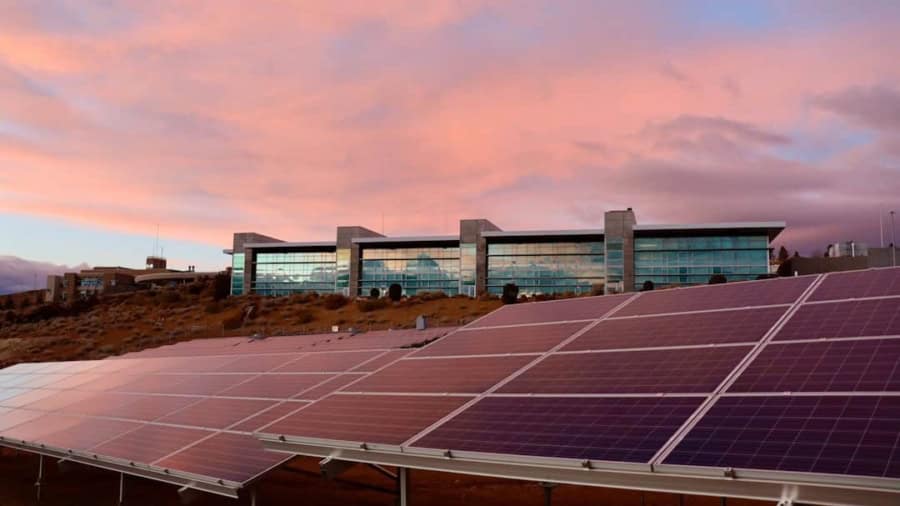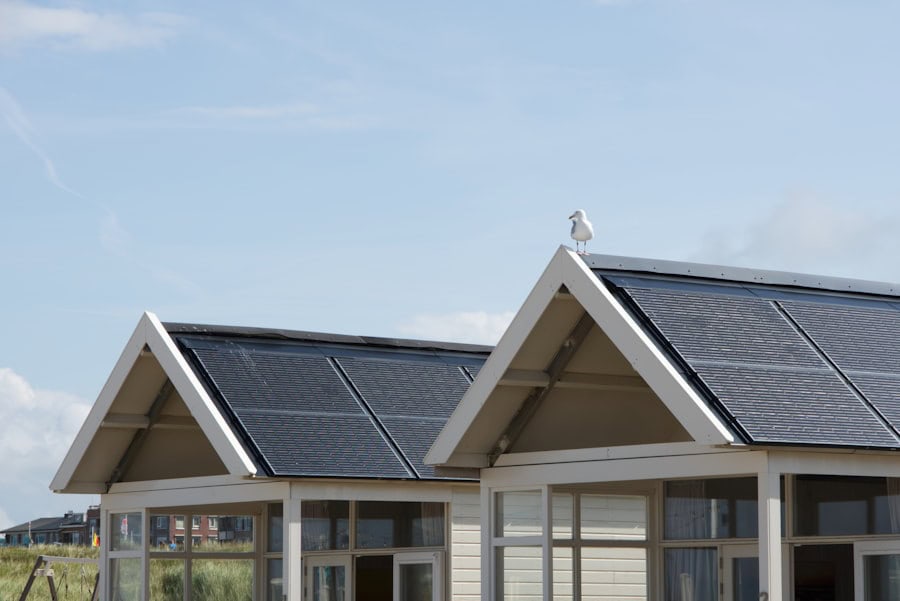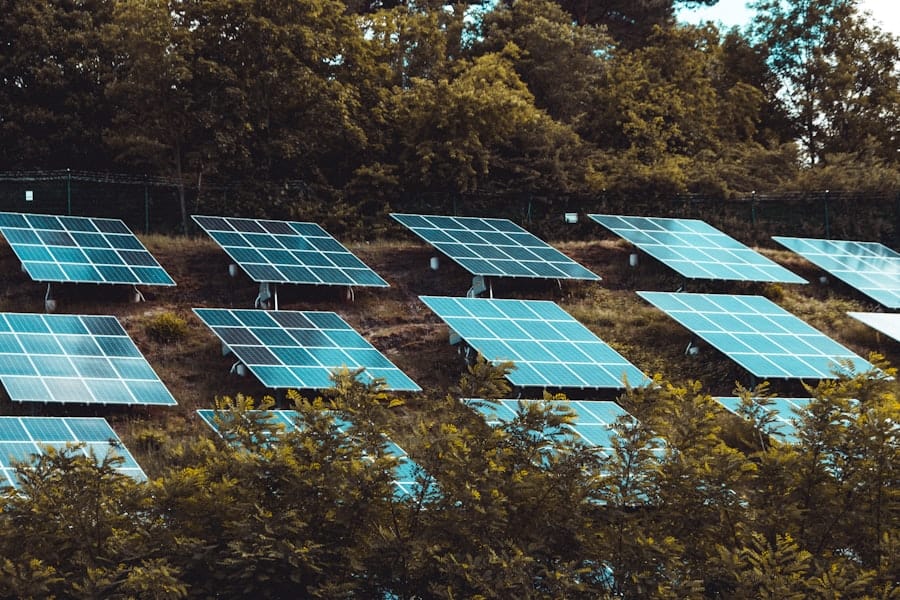In recent years, solar power has emerged as a leading renewable energy source in urban environments, driven by technological advancements and a growing awareness of climate change. Urban areas, characterized by their dense populations and extensive infrastructure, present unique challenges and opportunities for solar energy adoption. The proliferation of solar panels on rooftops has become a common sight in cities, transforming the skyline while contributing to local energy needs.
This shift is not merely aesthetic; it represents a significant move towards sustainability, as urban centers account for a substantial portion of global energy consumption and greenhouse gas emissions. The rise of solar power in urban areas can be attributed to several factors, including government incentives, decreasing costs of solar technology, and the increasing availability of financing options for homeowners and businesses. Many cities have implemented policies that encourage the installation of solar panels, such as tax credits, rebates, and streamlined permitting processes.
For instance, California has mandated that all new residential buildings include solar panels, setting a precedent that other states are beginning to follow. Additionally, the cost of photovoltaic (PV) systems has plummeted over the past decade, making solar energy more accessible to a broader range of consumers. As a result, urban dwellers are increasingly viewing solar installations not just as an environmental choice but also as a financially sound investment.
Key Takeaways
- Solar power is increasingly being adopted in urban areas due to its cost-effectiveness and environmental benefits.
- Wind turbines are being integrated into urban landscapes to harness wind energy and contribute to renewable energy production.
- Hydroelectric power has a significant impact on urban infrastructure, providing clean and reliable energy for urban areas.
- Geothermal energy is being utilized in urban heating systems, offering a sustainable and efficient alternative to traditional heating methods.
- Biomass plays a crucial role in urban energy production, providing renewable energy sources from organic materials.
Wind Turbines and Urban Landscapes
While solar power has taken center stage in urban renewable energy discussions, wind turbines are also making their mark in city landscapes. The integration of wind energy into urban settings is often met with skepticism due to concerns about noise, aesthetics, and space constraints. However, innovative designs and technologies have emerged that allow for the effective deployment of wind turbines in densely populated areas.
Vertical-axis wind turbines (VAWTs), for example, are particularly well-suited for urban environments because they can operate efficiently in turbulent wind conditions and require less space than traditional horizontal-axis turbines. Cities like Chicago and San Diego have begun to incorporate small-scale wind turbines into their energy portfolios. These installations not only contribute to the local energy grid but also serve as educational tools for residents about the benefits of renewable energy.
In some cases, urban wind projects have been combined with community initiatives, such as urban gardens or public art installations, creating multifunctional spaces that enhance both energy production and community engagement. The successful integration of wind turbines into urban landscapes demonstrates that with thoughtful planning and design, cities can harness the power of wind without compromising their aesthetic or functional integrity.
The Impact of Hydroelectric Power on Urban Infrastructure
Hydroelectric power has long been recognized as a reliable source of renewable energy, but its role in urban infrastructure is often overlooked. While large-scale hydroelectric dams are typically located in rural areas, smaller hydroelectric systems can be effectively integrated into urban settings. These systems can utilize existing water bodies, such as rivers or canals, to generate electricity without requiring extensive new infrastructure.
For instance, cities like Paris have explored the potential of harnessing the Seine River for small-scale hydroelectric projects that could provide clean energy to local neighborhoods.
By incorporating hydroelectric systems into urban planning, cities can enhance their resilience to climate change and improve water management practices.
For example, integrating hydroelectric facilities with stormwater management systems can help mitigate flooding while generating renewable energy. This dual benefit not only supports sustainability goals but also contributes to the overall livability of urban areas by reducing the risk of water-related disasters.
Geothermal Energy and Urban Heating Systems
Geothermal energy is another renewable resource that holds significant potential for urban heating systems. Unlike solar or wind energy, which are often associated with electricity generation, geothermal energy primarily provides heating and cooling solutions. Urban areas can leverage geothermal heat pumps to tap into the stable temperatures found underground, offering an efficient alternative to traditional heating methods.
These systems can be particularly beneficial in densely populated cities where space is limited and energy demand is high. Cities like Reykjavik in Iceland have successfully implemented geothermal heating on a large scale, providing hot water and heating to nearly 90% of their buildings. This model demonstrates how geothermal energy can be effectively utilized in urban settings to reduce reliance on fossil fuels and lower greenhouse gas emissions.
Moreover, the integration of geothermal systems into new construction projects can enhance energy efficiency and reduce operating costs for building owners. As more cities recognize the benefits of geothermal energy, it is likely that this resource will play an increasingly prominent role in urban heating strategies.
The Role of Biomass in Urban Energy Production
Biomass energy is derived from organic materials such as plant matter and waste products, making it a versatile renewable resource for urban energy production. In cities where waste management is a significant challenge, biomass can provide a sustainable solution by converting organic waste into usable energy. This process not only reduces landfill waste but also generates electricity or heat that can be used locally.
For example, cities like San Francisco have implemented programs to convert food waste into biogas through anaerobic digestion processes, which can then be used to generate electricity or heat. The role of biomass in urban energy production extends beyond waste management; it also supports local economies by creating jobs in the green technology sector. By investing in biomass facilities and infrastructure, cities can stimulate economic growth while addressing environmental concerns.
Furthermore, biomass energy systems can be integrated with other renewable technologies to create hybrid systems that enhance overall efficiency and reliability. As urban populations continue to grow, the importance of sustainable waste management solutions like biomass will become increasingly critical in meeting energy demands.
The Integration of Renewable Energy in Urban Transportation
The transition to renewable energy sources is not limited to stationary applications; it also extends to urban transportation systems. Electric vehicles (EVs) powered by renewable energy sources are becoming more prevalent in cities around the world. The integration of EV charging stations powered by solar or wind energy is an effective way to reduce emissions from transportation while promoting the use of clean energy.
Cities like Amsterdam have embraced this approach by installing solar-powered charging stations throughout the city, encouraging residents to adopt electric vehicles. Moreover, public transportation systems are increasingly incorporating renewable energy technologies. Electric buses powered by renewable sources are being deployed in cities such as Los Angeles and Shenzhen, significantly reducing air pollution and greenhouse gas emissions associated with traditional diesel buses.
The shift towards renewable-powered public transportation not only enhances sustainability but also improves public health outcomes by reducing harmful pollutants in urban air quality. As cities continue to innovate in transportation solutions, the integration of renewable energy will play a crucial role in shaping the future of urban mobility.
Smart Grids and Renewable Energy in Urban Settings
The development of smart grids represents a transformative shift in how cities manage their energy resources. Smart grids utilize advanced technologies such as sensors, communication networks, and data analytics to optimize electricity distribution and consumption. In urban settings where demand fluctuates significantly due to population density and diverse usage patterns, smart grids enable more efficient integration of renewable energy sources like solar and wind power.
By facilitating real-time monitoring and management of energy resources, smart grids enhance grid reliability while reducing waste. Cities like Barcelona have begun implementing smart grid technologies to improve their energy efficiency and sustainability efforts. These systems allow for better demand response capabilities, enabling consumers to adjust their usage based on real-time pricing signals or grid conditions.
Additionally, smart grids support decentralized energy generation by allowing homeowners with solar panels to sell excess electricity back to the grid. This not only incentivizes renewable energy adoption but also fosters community engagement in local energy production efforts.
The Future of Renewable Energy in Urban Living
As urban populations continue to grow and climate change poses increasing challenges, the future of renewable energy in urban living looks promising yet complex. Cities are at the forefront of innovation in renewable technologies and sustainable practices, driven by the need for cleaner air, reduced carbon footprints, and enhanced resilience against climate impacts. The ongoing development of integrated renewable energy systems—combining solar, wind, hydroelectricity, geothermal sources, and biomass—will be essential for creating sustainable urban environments.
Moreover, public awareness and community involvement will play a critical role in shaping the future landscape of renewable energy in cities. As residents become more educated about the benefits of renewable resources and actively participate in local initiatives—such as community solar projects or electric vehicle cooperatives—the demand for sustainable solutions will continue to rise. Policymakers will need to respond by creating supportive regulatory frameworks that encourage innovation while ensuring equitable access to clean energy resources for all urban residents.
In conclusion, the trajectory of renewable energy in urban living is poised for significant growth as cities embrace sustainability as a core principle of their development strategies. Through collaborative efforts among governments, businesses, and communities, urban areas can lead the way toward a cleaner, more sustainable future powered by renewable resources.
In a related article, Unlock a New World of Possibilities with Samsung Galaxy Z Fold4, explores the innovative features of the latest foldable smartphone from Samsung. Just as renewable energy technology is transforming urban living, the Samsung Galaxy Z Fold4 is revolutionizing the way we use and interact with our mobile devices. Both advancements showcase how technology is constantly evolving to improve our daily lives and the world around us.
FAQs
What is renewable energy technology?
Renewable energy technology refers to the use of energy sources that are naturally replenished, such as solar, wind, hydro, and geothermal power, to generate electricity and heat. These technologies are considered sustainable and environmentally friendly alternatives to traditional fossil fuels.
How is renewable energy technology transforming urban living?
Renewable energy technology is transforming urban living by providing cleaner and more sustainable energy sources for cities. This includes the integration of solar panels on buildings, wind turbines in urban areas, and the use of geothermal energy for heating and cooling systems. These technologies help reduce carbon emissions and air pollution in cities, leading to improved air quality and public health.
What are some examples of renewable energy tech in urban areas?
Some examples of renewable energy tech in urban areas include solar panels on rooftops and in parking lots, wind turbines in city parks or along coastlines, and geothermal heating and cooling systems in buildings. Additionally, cities are investing in smart grid technology to better integrate renewable energy sources into their energy infrastructure.
What are the benefits of using renewable energy technology in urban areas?
The benefits of using renewable energy technology in urban areas include reduced greenhouse gas emissions, improved air quality, decreased reliance on fossil fuels, and job creation in the renewable energy sector. Additionally, these technologies can help cities become more resilient to power outages and energy supply disruptions.
How are cities implementing renewable energy technology?
Cities are implementing renewable energy technology through various initiatives, such as setting renewable energy targets, offering incentives for renewable energy installations, and investing in infrastructure for renewable energy generation and distribution. Many cities are also partnering with private companies and research institutions to develop innovative renewable energy solutions.



